Our Grandmother’s Birthplace
“The wave of urban renewal that swept the world in the 20th century gave us inner-city highways, modernist downtown malls and high-rise housing projects. It destroyed countless fine-grained, human-scaled neighbourhoods.
“We lost more than just physical buildings. Each of these communities contained something less tangible – neighbourhoods like these are ecosystems. They incubate communities and cultures that do not and could not exist elsewhere.
“Sometimes a neighbourhood lives in the memory of the displaced and their descendants, as powerful in death as in life.”
—Matthew Halliday, “Vanished Neighbourhoods,” The Guardian (on-line), 18 July 2019
Bessie Estall was born in London in 1891. My sister and I wanted to visit the sites where Bessie, our grandmother, lived as a child. With copies of old documents in hand we found the neighborhoods, and in some cases, the buildings where she and her forebears were born, schooled, worked, worshiped, and departed.
This is the story of one of one of those sites.
Bessie was born on April 16, 1891. Her birth certificate records the event happening at 11 Museum Buildings in Bethnal Green in the East End of London.

The English census of 1891, taken eleven days before Bessie’s birth, also puts the family at 11 Museum Buildings. There were five family members living in the flat, soon to be six with Bessie’s arrival.

The current residents of the flat graciously invited us in for tea and a look at the place where Bessie was born.
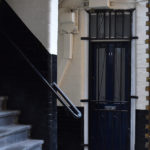
The flat is on the ground floor in the northwest corner of the four-story yellow-brick courtyard tenement built in 1888. Though the flat was undoubtedly reconfigured over the following century, we entered it through the same doorway as did our great-grandparents, and we occupied the same space they briefly used to raise their growing family. Our ancestral family consisted of the newly married William Estall and Sarah Ann Hutchings, Sarah’s three illegitimate children, and their first child together, Bessie. Bessie’s father William was working as a dock labourer at the harbor, likely at the docks down by the Thames. (He would have had to walk over two miles to the docks for a day job that oftentimes wouldn’t materialize. On the bright side, there was a plethora of pubs available on the walk home to slake his thirst.) Her mother Sarah Ann, misrecorded as Mary Ann in the census, was home raising the children. The older two children were attending the nearby Globe Road school.
The current residents of the flat, both Australians, greeted us warmly and invited their neighbor Tracy to join us. Our hosts were friendly and the conversation was engaging and wide-ranging given that Sian was a journalist, Hamish a university biologist/genetic researcher, and Tracy a school outreach officer.
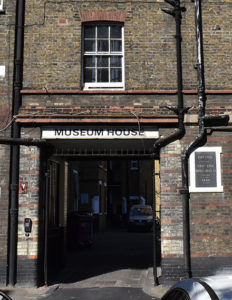 Although it’s difficult to imagine life in the Victorian era through the lens of modern-day London, walking through this building’s old portal into its courtyard, and then through the flat’s doorway, gave us a sense of place that documents and Google street view can’t match. Yes, we were 128 years too late to bump into our forebears, but we still carried their genes around as we roamed their neighborhood. And we brought a little something to leave behind, a small carved ironwood turtle that our hosts placed on their bookcase, to keep a bit of the family’s thoughts and spirits alive in Bessie’s birthplace. As the opening quote relates, “Sometimes a neighbourhood [and a family] lives in the memory of their descendants, as powerful in death as in life.” Through our visit, we, with the help of our hosts, were able to build such a memory.
Although it’s difficult to imagine life in the Victorian era through the lens of modern-day London, walking through this building’s old portal into its courtyard, and then through the flat’s doorway, gave us a sense of place that documents and Google street view can’t match. Yes, we were 128 years too late to bump into our forebears, but we still carried their genes around as we roamed their neighborhood. And we brought a little something to leave behind, a small carved ironwood turtle that our hosts placed on their bookcase, to keep a bit of the family’s thoughts and spirits alive in Bessie’s birthplace. As the opening quote relates, “Sometimes a neighbourhood [and a family] lives in the memory of their descendants, as powerful in death as in life.” Through our visit, we, with the help of our hosts, were able to build such a memory.
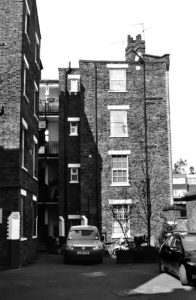 View of Bessie’s birthplace taken from the courtyard, which is the bottom flat in the center of the photo at left. Also a view of the living room windows taken from the building’s outside back, below, with some graffiti evident.
View of Bessie’s birthplace taken from the courtyard, which is the bottom flat in the center of the photo at left. Also a view of the living room windows taken from the building’s outside back, below, with some graffiti evident. 
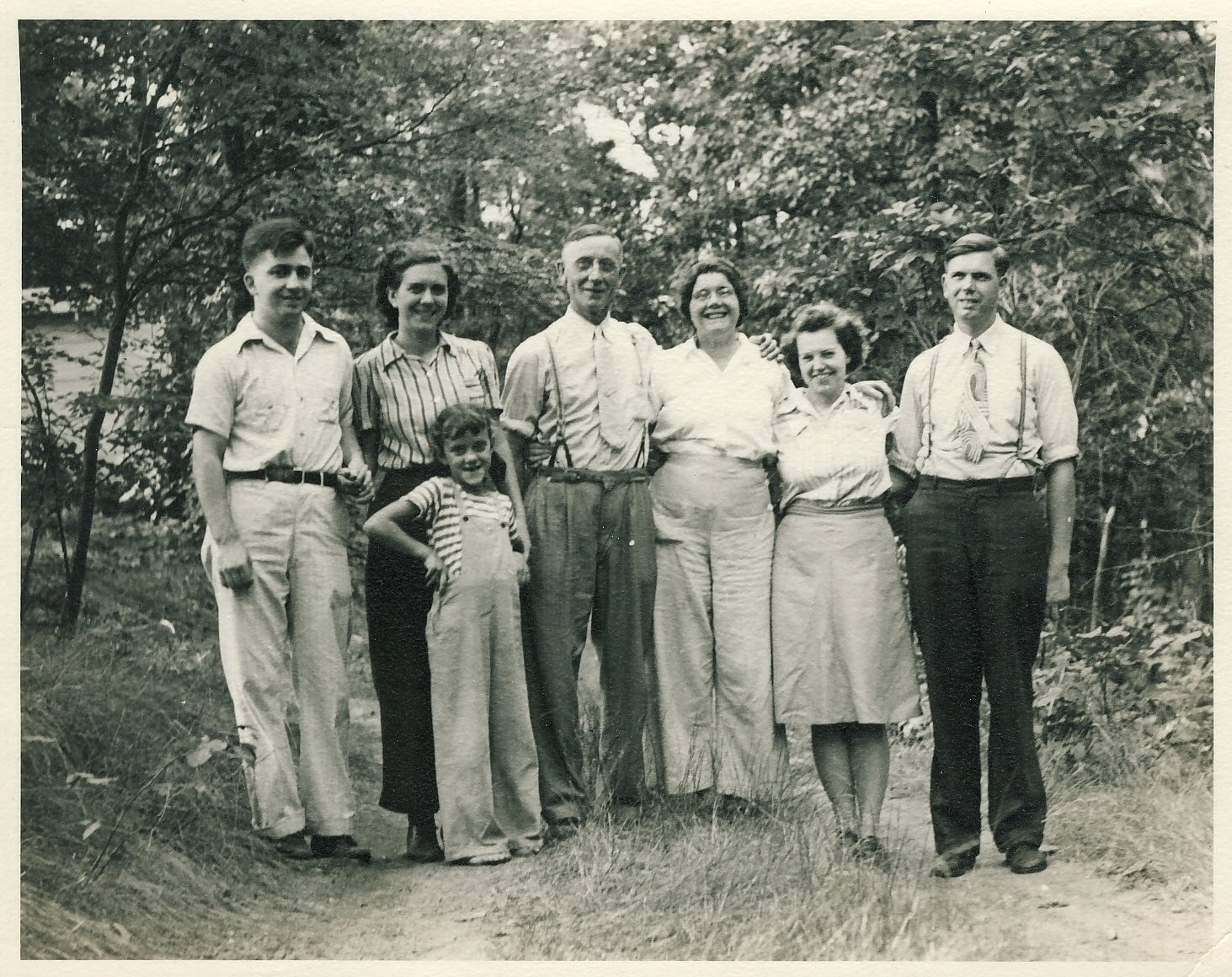

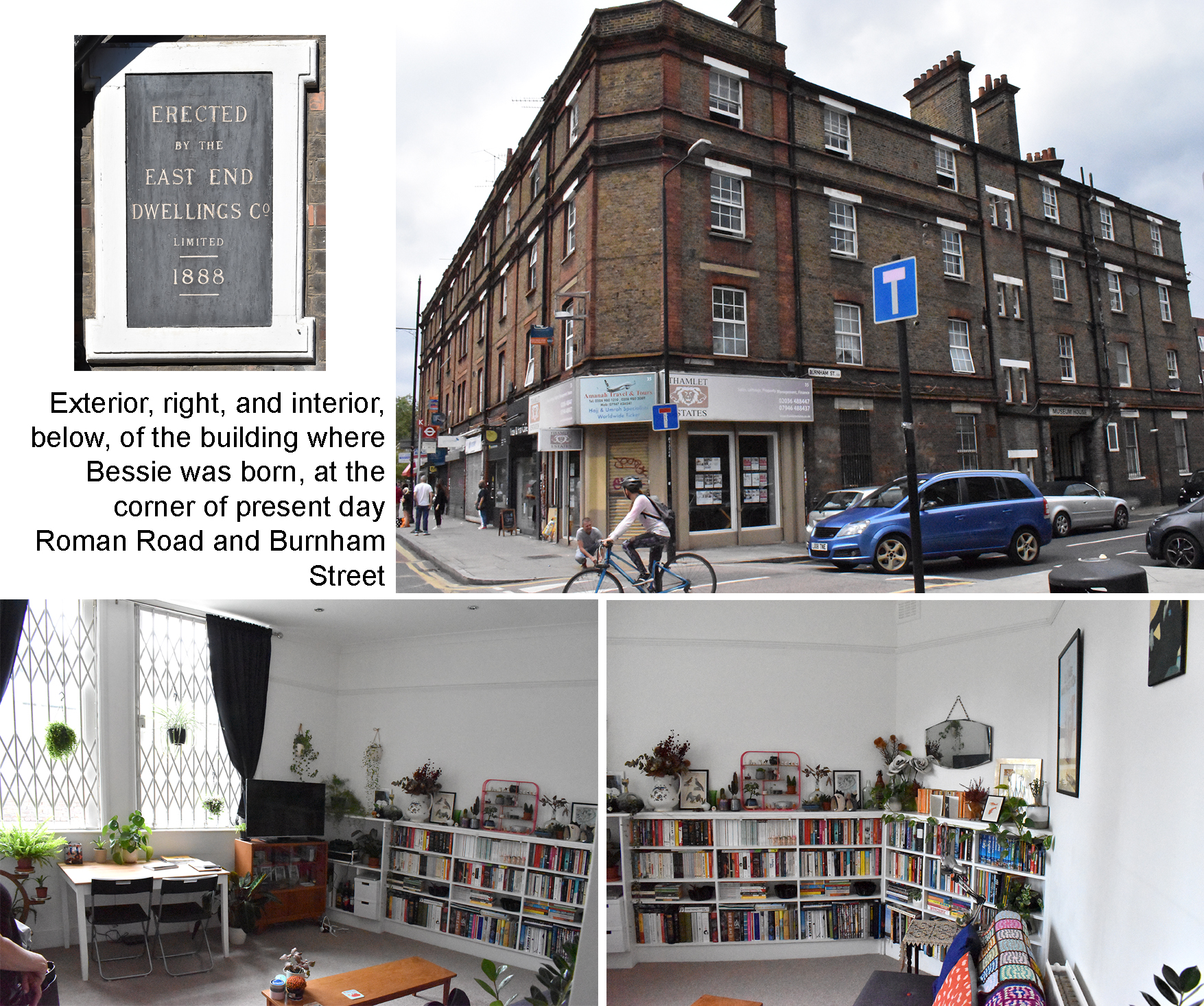
Dear Jamie, I so enjoyed your travel through time to visit your ancestors and seeing the old neighborhoods. I was moved by your and Beth’s passion for their almost forgotten stories.